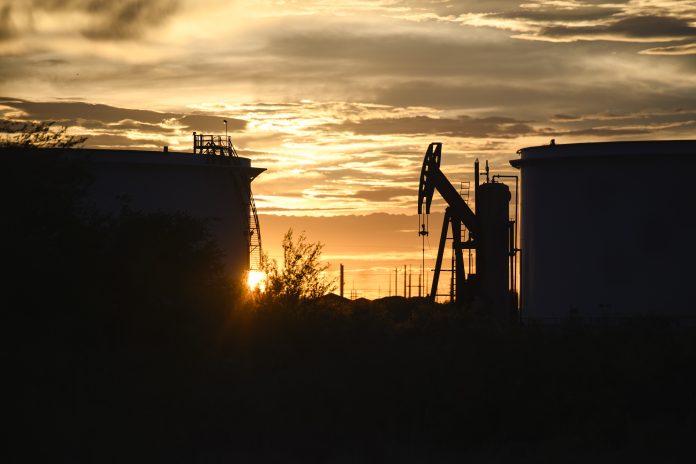
The Kinder Morgan Corp.’s new $2-billion Permian Highway Pipeline Expansion is laid and pumping with an ultimate capacity of 550 million cubic feet of natural gas per day and Texas Pipeline Association President Thure Cannon says it is a valuable link in the 440,000 miles of pipelines that the state boasts.
Running 430 miles from the Waha Hub near Coyanosa 64 miles southwest of Odessa to Katy 29 miles west of Houston, the Permian Highway “is part of the largest network of pipeline infrastructure in the United States, which represents roughly one-sixth of the country’s total pipeline mileage,” Cannon said from Austin, adding that Texas has more than 489,000 miles of total pipelines including those that cross state lines.
“Through them we safely, reliably and efficiently deliver the crude oil, petroleum products and natural gas necessary to fuel our economy and power our everyday lives,” Cannon said. “This vast network is integral to Texas’ prominence as a national and global energy leader given that it is both the largest producing state in the country as well as a major consumer of energy production thanks to its vast refining and manufacturing operations.
“If you add Texas’ extensive export industry, it is easy to understand how we have become one of the most critical energy-producing entities of the world,” he said.
Kinder Morgan President-CEO Kimberly Dang said from Houston that the Permian Highway Expansion went online Dec. 1 and the state’s network will be further bolstered when operations start with the MPLX and Whitewater companies’ Matterhorn Express Pipeline from the Basin to the Gulf Coast in the last half of next year.
Texas Independent Producers & Royalty Owners President Ed Longanecker said there is a serious need for the infrastructure because the International Energy Agency expects global gas demand to grow by an average of 1.6 percent each year between 2022 and ‘26.
“In 2023 alone U.S. natural gas production and demand hit record highs with continued growth being expected for 2024,” Longanecker said. “Texas operators are also doing their part to help address emissions with increased pipeline takeaway capacity enabling producers to reduce flaring in the Permian Basin and allowing the excess product to be used and transported.”
According to a recent Texans for Natural Gas Report, he said, the Basin has reached its lowest methane intensity yet and did so during a record production year.
“The industry was successful in reducing methane emissions intensity by nearly 85 percent between 2011 and 2022 while still meeting growing energy demand,” the TIPRO leader said from Austin. “As producers work to provide clean, reliable energy for our country, allies and trade partners abroad, new pipeline projects are coming online to ensure that production from basins like the Permian and Eagle Ford can make it to export terminals, municipalities and storage.
“In 2022 and ‘23 the Texas Railroad Commission issued 150 new intrastate online permits to pipeline operators, signaling how important this infrastructure is.”
Longanecker said more pipelines are needed across the United States, along with policies and regulations that support the build-out.
“In its 2023-24 Winter Reliability Assessment the North American Reliability Corp. flagged the need for additional pipeline capacity across several areas in the U.S. in order to avoid a lack of fuel supplies for natural gas-fired generation, specifically the Midwest, Mid-Atlantic and Northeast regions,” he said.
Dissimilar to smaller-scale oil and gas producing and transporting regions like those in the Northeast, Cannon said, Texas pipelines operate within a competitive market where the economic principles of supply and demand dictate the costs of service, set contract terms and determine the build-out of new infrastructure.
“This competitive market design ensures that Texans benefit from an efficient system that delivers some of the lowest energy prices in the nation,” he said. “Hundreds of businesses have relocated to Texas in recognition of this with an aim to take advantage of lower energy bills and operating costs coupled with plentiful natural resources to fuel those operations.
“With Texas now the second most populous state in the nation behind California, this steady influx of new residents and unprecedented business growth demands new takeaway capacity of its abundant natural resources so that it may continue to fuel the state and nation.”
Cannon said the Texas midstream industry has been ready for very cold weather since a 2011 winter storm prompted companies to invest in significant winterization of their infrastructure and enhance resilience.
“During Winter Storm Uri a decade later pipelines performed admirably as they were properly prepared and were not significantly affected by cold weather and freezing conditions according to the Federal Energy Regulatory Commission and North American Electric Reliability Corp.,” he said. “Contrary to some reports following the storm, pipelines do not freeze.
“They are buried underground and naturally insulated. It would take a temperature of minus-260 degrees to freeze natural gas.”
Cannon said 2021’s Texas Senate Bill 3 in Austin created a massive new regulatory structure that helps ensure the integrity of the energy grid and that the Legislature made additional reforms this year.
He said the Texas oil and gas pipeline industry generates $12,250 in property tax revenues per mile from a pipeline in a typical Texas county and it has contributed $60.5 billion in economic output, $34 billion in additional gross state product, $3.6 billion in state and local government revenues and 234,000 jobs.



